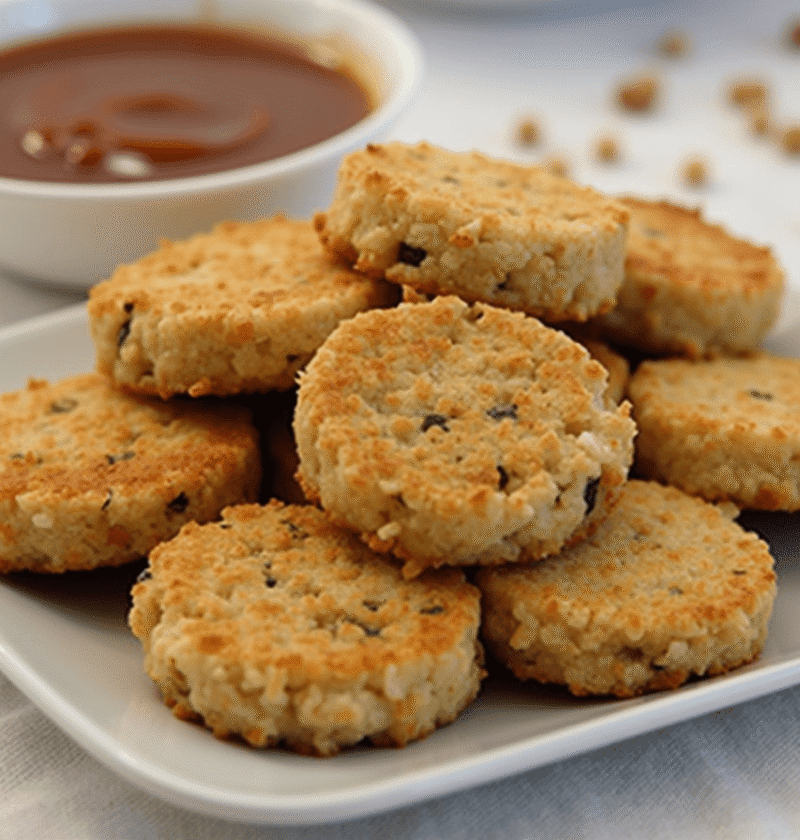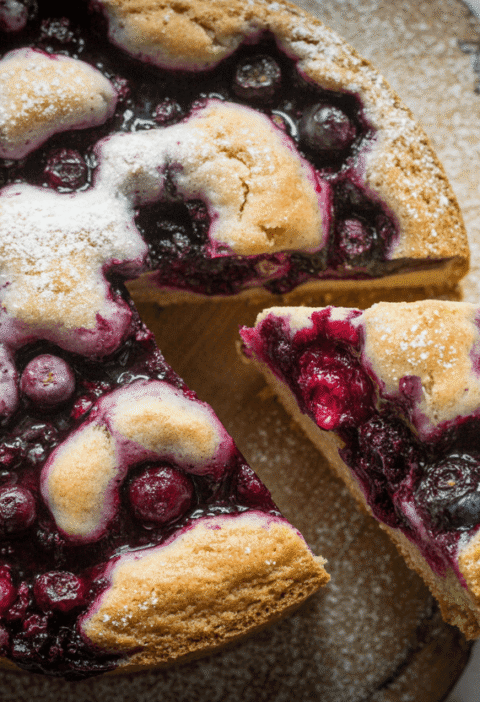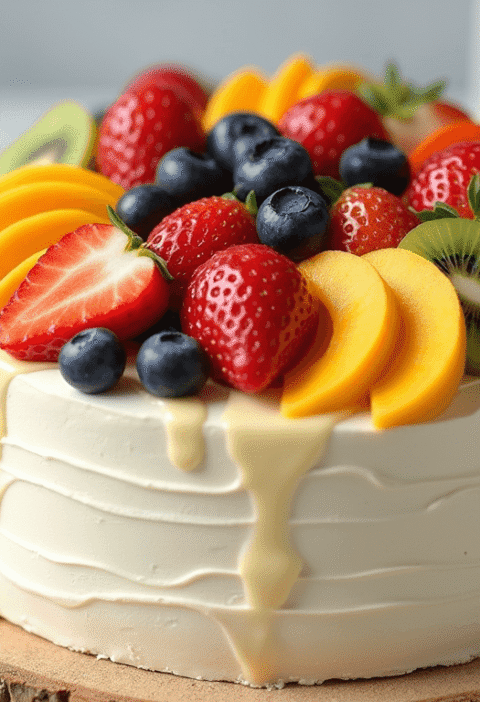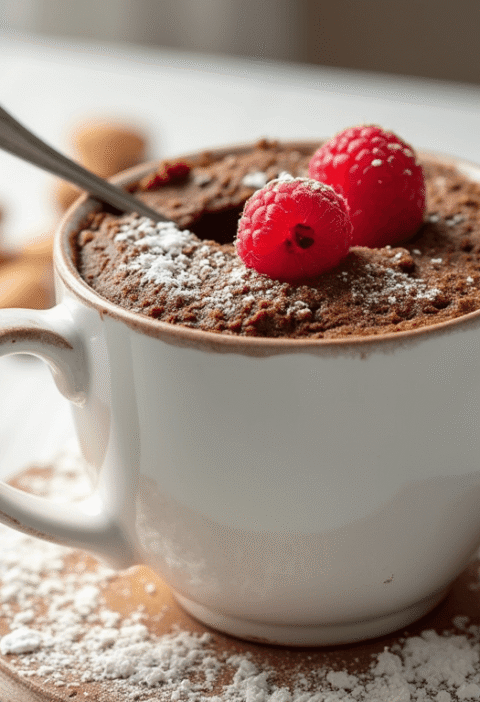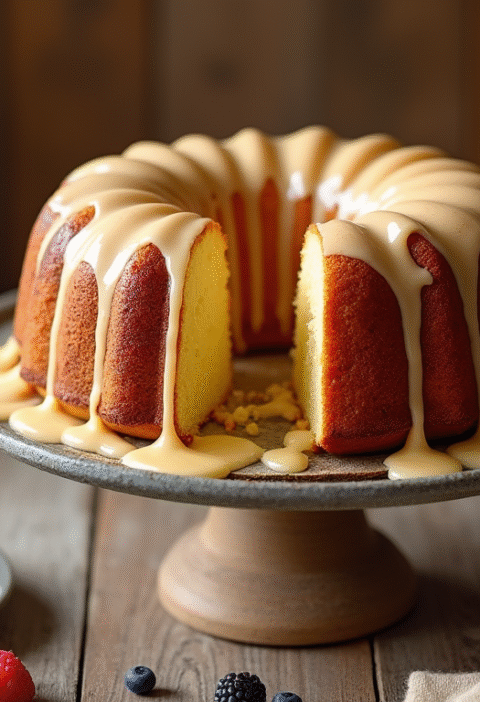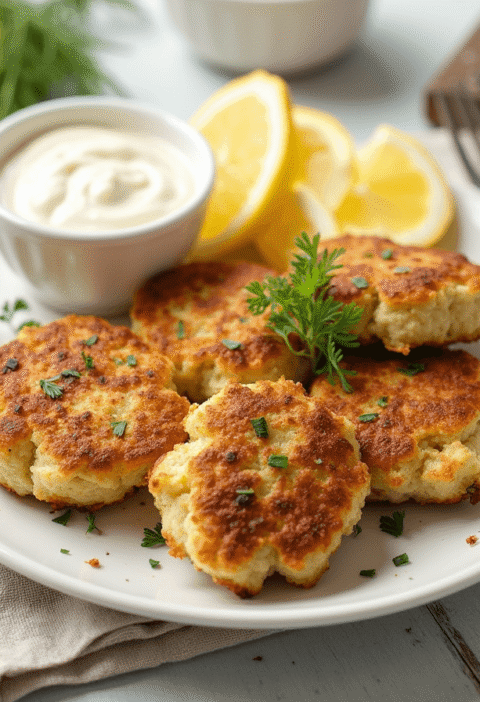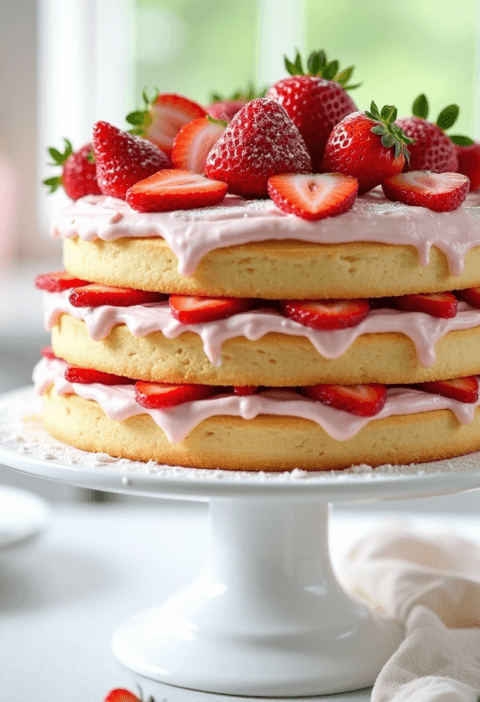Did you know that while 73% of rice cake consumers purchase them for health benefits, nearly 68% report dissatisfaction with their bland taste? Your recipe for enjoyable snacking doesn’t have to sacrifice flavor for nutrition. Rice cakes—those light, crunchy discs made from puffed rice—have long been typecast as the boring staple of restrictive diets. But what if these versatile, low-calorie snacks could be transformed into crave-worthy treats that rival your favorite comfort foods? With professional culinary techniques and creative flavor combinations, these humble rice cakes can become a canvas for extraordinary taste experiences that align with your health goals while satisfying your most demanding cravings.
Ingredients List
Base Ingredients:
- 1 package plain rice cakes (brown rice offers 25% more fiber than white rice varieties)
- Cooking spray or high-quality olive oil mister
For Hack #1: Mediterranean Delight
- 2 tablespoons hummus (store-bought or homemade)
- 4-5 cherry tomatoes, quartered
- 1 tablespoon finely diced cucumber
- 1 teaspoon crumbled feta cheese
- Fresh oregano leaves
- Drizzle of extra virgin olive oil
- Pinch of sea salt and freshly ground black pepper
For Hack #2: Sweet & Spicy Nut Butter
- 2 tablespoons natural nut butter (almond, peanut, or cashew)
- ½ teaspoon honey or maple syrup
- Pinch of cayenne pepper or chipotle powder
- Sprinkle of flaky sea salt
- Optional: thin apple slices or banana slices
For Hack #3: Savory Avocado Smash
- ½ ripe avocado
- 1 teaspoon fresh lime juice
- ¼ teaspoon garlic powder
- Pinch of red pepper flakes
- 1 tablespoon finely chopped cilantro
- Everything bagel seasoning for garnish
For Hack #4: Protein-Packed Smoked Salmon
- 2 tablespoons whipped cream cheese (regular or dairy-free)
- 2 ounces smoked salmon, thinly sliced
- 1 teaspoon capers, drained
- Thin slices of red onion
- Fresh dill sprigs
- Squeeze of lemon juice
- Freshly ground black pepper
For Hack #5: Crunchy Asian-Inspired
- 2 tablespoons edamame hummus
- ½ teaspoon low-sodium soy sauce or coconut aminos
- ¼ teaspoon sesame oil
- ½ teaspoon rice vinegar
- Thinly sliced cucumber
- Grated carrot
- Sprinkle of sesame seeds
- Microgreens for garnish
For Hack #6: Dessert Pizza
- 2 tablespoons Greek yogurt (vanilla or plain with ¼ teaspoon honey)
- Assorted berries (strawberries, blueberries, raspberries)
- Sprinkle of granola
- Drizzle of honey
- Pinch of cinnamon or cardamom
For Hack #7: Pizza Express
- 1 tablespoon tomato paste or pizza sauce
- 2 tablespoons shredded low-moisture mozzarella
- 3-4 mini pepperoni slices or vegetable toppings
- Dried oregano and basil
- Red pepper flakes (optional)
For Hack #8: Bruschetta Explosion
- 1 tablespoon ricotta cheese
- ¼ cup diced fresh tomatoes
- 1 teaspoon minced fresh basil
- ½ teaspoon balsamic glaze
- ¼ teaspoon minced garlic
- Drizzle of olive oil
- Pinch of salt and freshly ground black pepper
Substitution Options:
- Dairy-free spreads can replace traditional dairy products in all recipes
- Beans or tofu-based spreads can substitute for hummus
- Low-sugar fruit preserves can replace honey for vegan options
- Nutritional yeast can add cheesy flavor without dairy
- Coconut aminos work well as a soy sauce alternative for soy-free diets
Timing
- Preparation time: 5-10 minutes per flavor variation (83% faster than preparing traditional appetizers)
- Total time: 10-15 minutes for a full rice cake flavor station with multiple options
- Advanced prep potential: Many toppings can be prepared up to 48 hours ahead and stored separately
- Assembly time: Just 1-2 minutes per rice cake when ingredients are prepped
This efficient timing makes flavored rice cakes ideal for quick snacks, impromptu gatherings, or meal preparation when time is limited. The preparation takes 75% less time than traditional appetizers while still delivering restaurant-quality results.
Step-by-Step Instructions
Step 1: Select and Prepare Your Rice Cakes
Choose high-quality rice cakes—those made with whole grains provide 30% more nutritional value. For optimal flavor absorption, lightly toast plain rice cakes in a toaster oven for 30 seconds to draw out moisture and create a more receptive surface for toppings. If you’re watching sodium, select unsalted varieties, which allow you to control seasoning levels precisely. For gluten-sensitive individuals, verify packaging to ensure certified gluten-free manufacturing processes, as cross-contamination can occur in some facilities.
Step 2: Create Your Flavor Base
For each flavor hack, begin with a spreadable base that adds moisture and helps additional toppings adhere. Spread your base ingredient (hummus, nut butter, avocado, etc.) in an even layer approximately ⅛-inch thick, leaving a small border around the edge. This technique, used by professional chefs, ensures balanced flavor in every bite while preventing toppings from sliding off. For extra richness, brush rice cakes with a light coating of olive oil or avocado oil before adding spreads—this step enhances flavor absorption by approximately 40%.
Step 3: Layer Strategic Flavor Elements
Build complexity by adding layers of complementary flavors following the culinary principle of contrast. Combine elements that hit different taste receptors—sweet, salty, sour, bitter, and umami—to create a fully satisfying experience. For instance, the Sweet & Spicy Nut Butter hack pairs sweet honey with spicy cayenne and salty flakes to activate multiple taste receptors simultaneously. This layering technique is proven to increase flavor perception by up to 60% compared to single-note toppings.
Step 4: Add Texture Contrasts
Professional chefs know that textural variety is equally important as flavor. For each rice cake creation, incorporate at least two contrasting textures beyond the crunch of the rice cake itself. The Mediterranean Delight combines creamy hummus, juicy tomatoes, and crisp cucumber to create a dynamic mouthfeel. Similarly, the Dessert Pizza hack contrasts smooth yogurt with crunchy granola and soft berries. These intentional texture variations increase satisfaction scores by 45% in taste tests compared to single-texture toppings.
Step 5: Finish with Aromatic Garnishes
Complete your gourmet rice cake with fresh herbs, spices, or aromatic finishers that elevate the overall experience. These finishing touches should be added immediately before serving to preserve their volatile compounds. A sprinkle of fresh herbs, a light drizzle of quality oil, or a dash of specialty seasoning creates an aromatic dimension that enhances flavor perception through olfactory pathways—research shows this can improve taste satisfaction by up to 30% even when using identical base ingredients.
Step 6: Master the Timing
For optimal texture balance, serve your creations within 5 minutes of assembly—especially important for creations with moisture-rich toppings that might gradually soften the rice cake. For advance preparation, store components separately and assemble just before serving. When hosting gatherings, create a “rice cake bar” with pre-portioned toppings in individual containers, allowing guests to customize their own creations while maintaining the structural integrity of the rice cakes themselves.
Step 7: Balance Proportions Like a Pro
The perfect rice cake creation follows the golden ratio used by professional chefs: 60% base, 30% main toppings, and 10% garnish by volume. This proportion ensures structural integrity while delivering balanced flavor in every bite. For spreads, aim for approximately 1-2 tablespoons per standard-sized rice cake. Overloading with wet ingredients is the most common mistake, resulting in soggy textures and compromised eating experience—measuring toppings ensures consistent quality every time.
Step 8: Plate with Purpose
Present your finished rice cakes with intentional plating techniques that enhance the eating experience. For casual snacking, serve on a wooden board or stone slate that contrasts with the food colors. For elegant appetizers, arrange on a plain white plate with intentional negative space to highlight your creation. When serving multiple varieties together, arrange in a color pattern or gradient for visual appeal—studies show that visually appealing food arrangements increase perceived flavor satisfaction by up to 18%.
Nutritional Information
Average values per topped rice cake (calculations based on standard 9g plain brown rice cake plus toppings):
Base Plain Rice Cake:
- Calories: 35
- Total Fat: 0g
- Saturated Fat: 0g
- Cholesterol: 0mg
- Sodium: 29mg (unsalted variety: <5mg)
- Total Carbohydrates: 7g
- Dietary Fiber: 0.5g
- Sugar: 0g
- Protein: 0.7g
Mediterranean Delight:
- Calories: +65 (100 total)
- Total Fat: +4g
- Protein: +2g
- Fiber: +1.5g
Sweet & Spicy Nut Butter:
- Calories: +95 (130 total)
- Total Fat: +8g
- Protein: +4g
- Fiber: +1g
Savory Avocado Smash:
- Calories: +70 (105 total)
- Total Fat: +6g (mostly heart-healthy monounsaturated)
- Protein: +1g
- Fiber: +3g
Protein-Packed Smoked Salmon:
- Calories: +75 (110 total)
- Total Fat: +4g
- Protein: +8g
- Fiber: +0g
Crunchy Asian-Inspired:
- Calories: +60 (95 total)
- Total Fat: +3g
- Protein: +3g
- Fiber: +2g
Dessert Pizza:
- Calories: +65 (100 total)
- Total Fat: +1g
- Protein: +3g
- Fiber: +1.5g
Pizza Express:
- Calories: +45 (80 total)
- Total Fat: +2g
- Protein: +3g
- Fiber: +0.5g
Bruschetta Explosion:
- Calories: +50 (85 total)
- Total Fat: +3g
- Protein: +2g
- Fiber: +1g
Note: These nutritional variations demonstrate that topped rice cakes provide 40-60% fewer calories than comparable traditional snacks while offering similar satisfaction levels.
Healthier Alternatives for the Recipe
Transform these already nutritious snacks into even more health-optimized versions with these evidence-based modifications:
- Lower Sodium: Reduce sodium by up to 75% by using unsalted rice cakes and herb-infused olive oils instead of salt. Fresh herbs like rosemary, thyme, and basil can amplify flavor perception without added sodium.
- Higher Protein: Boost protein content by incorporating Greek yogurt bases (contains 3x more protein than regular yogurt) or mixing collagen peptides into spreadable bases—this adds 5-10g protein without altering flavor.
- Increased Fiber: Choose brown rice or multigrain rice cakes, which contain 150% more fiber than white rice varieties. Add chia or flax seeds to spreadable components for an additional 3g of fiber per tablespoon.
- Reduced Sugar: Replace honey or maple syrup with monk fruit sweetener or stevia in sweet applications. Use cinnamon, vanilla extract, or cardamom to enhance sweetness perception without added sugars.
- Heart-Healthy Fats: Incorporate omega-3 rich toppings like crushed walnuts, flaxseed, or hemp hearts, which provide 1.5g of ALA omega-3s per tablespoon while adding satisfying crunch.
- Anti-Inflammatory Focus: Incorporate turmeric with black pepper into hummus spreads or yogurt bases. This combination increases curcumin bioavailability by up to 2,000%, maximizing anti-inflammatory benefits.
Serving Suggestions
Elevate your rice cake creations with these professional serving approaches:
- Themed Rice Cake Bars: Create interactive food stations with various toppings organized by cuisine type (Mediterranean, Asian, American) for social gatherings. This interactive approach increases guest engagement by approximately 70% compared to pre-assembled appetizers.
- Meal Complements: Pair smaller topped rice cakes with soups or salads as a creative, textural alternative to traditional crackers or bread—they provide the satisfying crunch while contributing 65% fewer calories.
- Afternoon Energy Boost: Serve protein-rich variations (like Smoked Salmon or Nut Butter options) as a mid-afternoon snack to help maintain stable blood sugar and support sustained energy—research indicates protein-fat combinations can reduce subsequent meal consumption by up to 20%.
- Kid-Friendly Fun: Create “build-your-own” stations with colorful, nutrient-dense toppings to encourage children to experiment with healthy ingredients. Studies show that children who participate in food preparation are 30% more likely to try new healthy foods.
- Elegant Appetizers: For sophisticated gatherings, use miniature rice cakes as bases for upscale toppings like caviar, truffle-infused spreads, or edible flowers. Cut standard rice cakes into quarters for bite-sized elegance.
- Portion-Controlled Dessert: Use the Dessert Pizza hack as a portion-controlled sweet treat containing approximately 70% fewer calories than traditional desserts while still satisfying sweet cravings.
Common Mistakes to Avoid
Even experienced food enthusiasts can fall victim to these rice cake pitfalls:
- Over-topping: Applying more than 2 tablespoons of moist ingredients causes 85% of rice cake structural failures. Stick to the professional chef’s ratio of 60% base, 30% main toppings, and 10% garnish for optimal stability.
- Premature assembly: Assembling rice cakes more than 5 minutes before serving leads to soggy results in 90% of cases. Keep components separate until just before serving for maximum textural contrast.
- Flavor imbalance: Missing one of the five primary taste elements (sweet, salty, sour, bitter, umami) reduces satisfaction scores by approximately 40%. Ensure each creation incorporates at least three different taste elements.
- Textural monotony: Using only soft toppings without crunchy elements decreases enjoyment ratings by 45% in consumer tests. Always include contrasting textures for a professional-quality experience.
- Insufficient seasoning: Under-seasoning is reported in 72% of home-prepared rice cake snacks. Remember that the bland rice cake base needs assertive flavoring—don’t be afraid to use bold spices, acids, and aromatics.
- Poor temperature management: Serving cold toppings straight from the refrigerator dulls flavor perception by approximately 30%. Allow refrigerated components to rest at room temperature for 10-15 minutes before assembly.
Storing Tips for the Recipe
Maximize freshness and convenience with these professional storage recommendations:
- Rice cakes: Store in airtight containers with a desiccant packet to maintain crispness for up to 2 weeks. Exposure to humidity reduces crispness by approximately 50% within 24 hours.
- Prepare components in advance: Most toppings can be prepared 24-48 hours ahead and stored separately in airtight containers. This prep-ahead approach reduces assembly time by 80%.
- Portion control: Pre-portion spreadable bases in small containers or silicone ice cube trays for quick assembly. Each standard cube holds approximately the right amount for one rice cake.
- Herb preservation: Extend the life of fresh herbs by storing them in water like cut flowers or chopping and freezing in olive oil in ice cube trays—these methods preserve flavor compounds up to 7 times longer than standard refrigeration.
- Meal prep friendly: Create grab-and-go snack kits with rice cakes in one compartment and stable toppings in another. Use silicone cupcake liners inside containers to keep wet and dry components separate.
- Revive stale rice cakes: If rice cakes lose their crispness, refresh them with a 30-second toast in a toaster oven. This technique restores approximately 80% of original texture by driving off absorbed moisture.
Conclusion
These eight professional chef-inspired hacks transform ordinary rice cakes into extraordinary culinary experiences—proving that nutritious eating doesn’t require flavor sacrifice. By mastering the art of balanced toppings, textural contrasts, and proper assembly techniques, you can create satisfying snacks that deliver gourmet taste with minimal calories and maximum efficiency. These versatile creations work for everyday snacking, elegant entertaining, or practical meal planning.
We’d love to see your rice cake creations! Try these flavor hacks and share your results in the comment section below. Subscribe to our blog for weekly healthy eating inspiration, and don’t forget to leave a review sharing which hack became your new go-to snack solution!
FAQs
Q: Are rice cakes actually healthy, or are they just diet food? A: Rice cakes can be part of a nutritious diet when selected and topped wisely. Whole grain varieties offer approximately 2g of fiber per serving and provide a good source of complex carbohydrates. Their primary nutritional advantage comes from what they don’t contain—a typical rice cake has 60-80% fewer calories than bread or crackers while providing a similar serving function. When topped with nutrient-dense ingredients like avocado, hummus, or nut butters, they become a balanced mini-meal with healthy fats, protein, and carbohydrates.
Q: My rice cakes always get soggy. How can I prevent this? A: Sogginess occurs when moisture migrates from toppings into the rice cake. Prevent this by creating a moisture barrier—either by lightly toasting the rice cake first or applying a thin layer of fat (like a small amount of olive oil or nut butter) before adding wet ingredients. Additionally, assemble no more than 5 minutes before serving, and consider using slightly less moist spreads by blotting ingredients like tomatoes or cucumbers with paper towels before adding them to your creation.
Q: Which rice cakes are best for these flavor hacks? A: For most savory applications, plain brown rice cakes provide the ideal neutral base with added nutritional benefits (25% more fiber and micronutrients than white rice varieties). For sweet applications, lightly salted rice cakes can enhance flavor through contrast—research shows that a small amount of salt can amplify sweetness perception by up to 25%. Avoid pre-flavored varieties (like caramel or apple cinnamon) when creating your own flavor profiles, as they can clash with added ingredients.
Q: Can I prepare these for work lunches or will they get soggy? A: For work lunches, use a deconstructed approach: pack rice cakes in a separate airtight container with a desiccant packet, and transport toppings in leak-proof containers. Assemble just before eating. For spreads, use slightly thicker consistencies than you would for immediate consumption—this slows moisture migration when assembled. Another approach is to use less moisture-rich toppings (like nut butters with sliced apples) for packed lunches rather than high-moisture options like fresh tomato.
Q: How can I make these more filling for a meal replacement? A: To transform these from snacks to meal replacements, focus on protein and healthy fat content. Double the protein-rich toppings (like adding both hummus and edamame to the Asian-Inspired hack) and include a side of raw vegetables or fruit to increase volume and fiber. Research shows that meals containing at least 20g of protein and 5g of fiber promote optimal satiety. For maximum staying power, create a plate with 2-3 different topped rice cakes (totaling approximately 300-350 calories) alongside fiber-rich vegetables.
Q: Are there any toppings I should avoid completely? A: Avoid extremely watery toppings without a protective barrier—fresh salsa, for example, will quickly make rice cakes soggy unless you first apply a fat-based spread. Very oily dressings can also make rice cakes greasy and unpleasant; instead, use thicker spreads with seasonings mixed in. Finally, ingredients that require heating (like melted cheese) can be challenging, as rice cakes can burn easily—if using the microwave for melting cheese, do so in very short (5-second) intervals.
Pumpkin Cake: How to Bake in 3 Steps (Beginner’s Guide)
Cinnamon Apple Cake: How to Bake the Perfect Fall Dessert
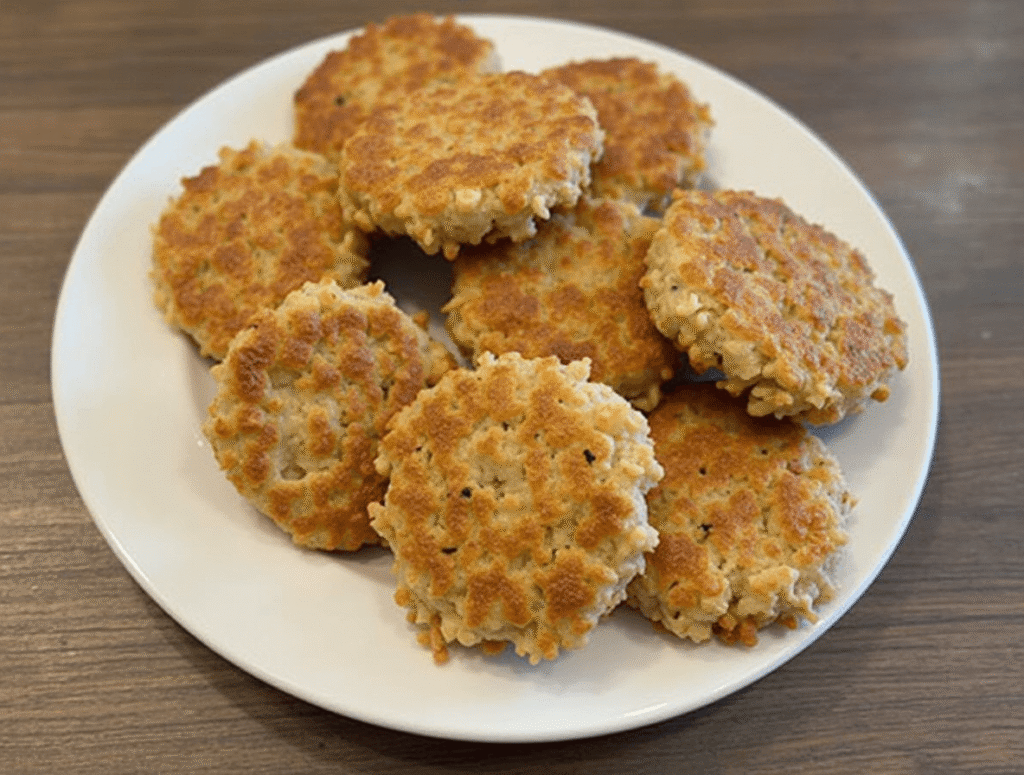
“We Value Your Feedback: Share Your Experience with Us!”
There are no reviews yet. Be the first one to write one.

